Business
Trump’s global tariffs ‘victory’ may come at a high price

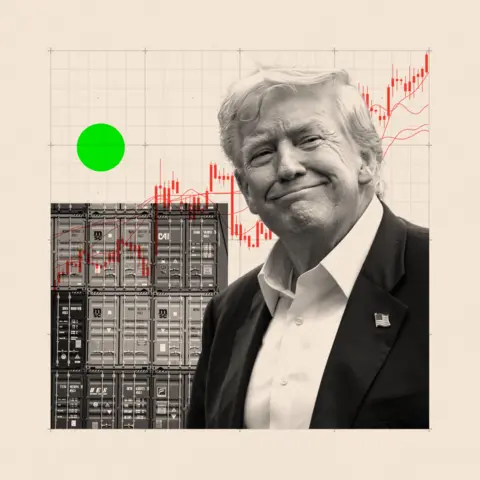 BBC
BBCIn April Donald Trump stunned the world by announcing sweeping new import tariffs – only to put most on hold amid the resulting global financial panic.
Four months later, the US president is touting what he claims are a series of victories, having unveiled a handful of deals with trading partners and unilaterally imposed tariffs on others, all without the kind of massive disruptions to the financial markets that his spring attempt triggered.
At least, so far.
Having worked to reorder America’s place in the global economy, Trump is now promising that the US will reap the benefits of new revenue, rekindle domestic manufacturing, and generate hundreds of billions of dollars in foreign investment and purchases.
Whether that turns out to be the case – and whether these actions will have negative consequences – is still very much in doubt.
What is clear so far, however, is that a tide that was (gently) turning on free trade, even ahead of Trump’s second term, has become a wave crashing across the globe. And while it is reshaping the economic landscape, it hasn’t left the kind of wreckage in its wake that some might have predicted – though of course there is often a lag before impact is fully seen.
What’s more, for many countries, this has all served as a wake up call – a need to remain alive to fresh alliances.
And so, while the short term result might be – as Trump sees it – a victory, the impact on his overarching goals is far less certain. As are the long-term repercussions, which could well pan out rather differently for Trump – or the America he leaves behind after his current term.
The ’90 deals in 90 days’ deadline
For all the wrong reasons, 1 August had been ringed on international policymakers’ calendars. Agree new trading terms with the US by then, they’d been warned – or face potentially ruinous tariffs.
While White House trade adviser Peter Navarro predicted “90 deals in 90 days” and Trump offered an optimistic outlook on reaching agreements, the deadline always appeared to be a tall order. And it was.
By the time the end of July rolled around, Trump had only announced about a dozen trade deals – some no more than a page or two long, without the kind of detailed provisions standard in past negotiations.
 REUTERS/Suzanne Plunkett/Pool
REUTERS/Suzanne Plunkett/PoolThe UK was first off the blocks, perhaps inevitably. Trump’s biggest bugbear is, after all, America’s trade deficit, and trade is in broad balance when it comes to the UK.
While the baseline 10% applied to most British goods may initially have raised eyebrows, it provided a hint of what was to follow – and in the end came as a relief compared to the 15% rate applied to other trading partners such as the EU and Japan, with whom the US has larger deficits; $240bn and $70bn respectively last year alone.
And even those agreements came with strings attached. Those countries that weren’t able to commit to, say, buying more American goods, often faced higher tariffs.
South Korea, Cambodia, Pakistan – as the list grew, and tariff letters were fired off elsewhere, the bulk of American imports are now covered by either an agreement or a presidential decree concluded with a curt “thank you for your attention to this matter”.
Capacity to ‘damage’ the global economy
Much has been revealed as a result of this.
First, the good news. The wrangling of the last few months means the most painful of tariffs, and recession warnings, have been dodged.
The worst fears – in terms of tariff levels and potential economic fallout (for the US and elsewhere) – have not been realised.
 JOHN G MABANGLO/EPA/Shutterstock
JOHN G MABANGLO/EPA/ShutterstockSecond, the agreement of tariff terms, however unpalatable, reduced much of the uncertainty (itself wielded by Trump as a powerful economic weapon) for better – and for worse.
For better, in the sense that businesses are able to make plans, investment and hiring decisions that had been paused may now be resumed.
Most exporters know what size tariffs their goods face – and can figure out how to accommodate or pass on the cost to consumers.
That growing sense of certainty underpins a more relaxed mood in financial markets, with shares in the US notably gaining.
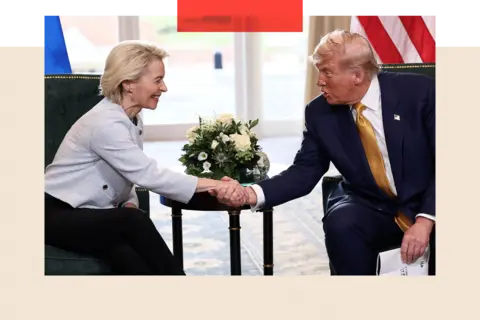 REUTERS/Evelyn Hockstein
REUTERS/Evelyn HocksteinBut it’s for the worse, in the sense that the typical tariff for selling into the US is higher than before – and more extreme than analysts predicted just six months ago.
Trump may have hailed the size of the agreement of the US with the EU – but these are not the tariff-busting deals we equated with tearing down trade barriers in previous decades.
The greatest fears, the warnings of potential disaster, have receded. But Ben May, Director of global macro forecasting at Oxford Economics, says that US tariffs had the capacity to “damage” the global economy in several ways.
“They are obviously raising prices in the US and squeezing household incomes,” he says, adding that the policies would also reduce demand around the world if the world’s largest economy ends up importing fewer goods.
Winners and losers: Germany, India and China
It’s not just about the size of tariff, but the scale of trading relationship with the US. So while India potentially faces tariffs of over 25% on its exports to the US, economists at Capital Economics reckon that, with US demand accounting for just 2% of that nation’s gross domestic product, the immediate impact on growth could be minor.
The news is not so good for Germany, though, where the 15% tariffs could knock more than half a percentage point off growth this year, compared to what was expected earlier in the year.
That’s due to the size of its automotive sector – unhelpful for an economy that may be teetering on the brink of recession.
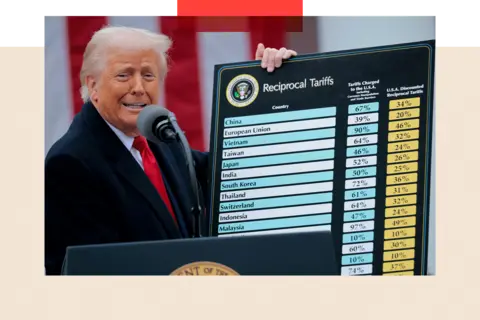 Chip Somodevilla/Getty Images
Chip Somodevilla/Getty ImagesMeanwhile, India became the top source of smartphones sold in the US in the last few months, after fears of what may lie in store for China prompted Apple to shift production.
On the other hand, India will be mindful that the likes of Vietnam and the Philippines – which face lower tariffs when selling to the US – may become relatively more attractive suppliers in other industries.
Across the board, however, there’s relief that the blow, at least, is likely to be less extensive than might have been. But what has been decided already points to longer-term ramifications for global trading patterns and alliances elsewhere.
And the element of jeopardy introduced into a long-established major relationship with the US, lent added momentum to the UK’s pursuit of closer ties with the EU – and getting a trade deal with India over the line.
For many countries, this has served as a wake up call – a need to remain alive to fresh alliances.
A very real political threat for Trump?
As details are nailed down, the implications for the US economy become clearer too.
Growth in the late spring there actually benefitted from a flurry of export sales, as businesses rushed to beat any higher tariffs imposed on American goods.
Economists expect that growth to lose momentum over the rest of the year.
Tariffs that have increased from an average of 2% at the beginning of the year to around 17% now have had a notable impact on US government revenue – one of the stated goals of Trump’s trade policy. Import duties have brought in more than $100bn so far this year – about 5% of US federal revenue, compared to around 2% in past years.
Treasury Secretary Scott Bessent said he expected tariff revenue this year to total about $300bn. By comparison, federal income taxes bring in around $2.5tn a year.
American shoppers remain in the front line, and have yet to see higher prices passed on in full. But as consumer goods giants such as Unilever and Adidas start to put numbers on the cost increases involved, some sticker shock, price rises, loom – potentially enough to delay Trump’s desired rate cut – and possibly a dent to consumer spending.
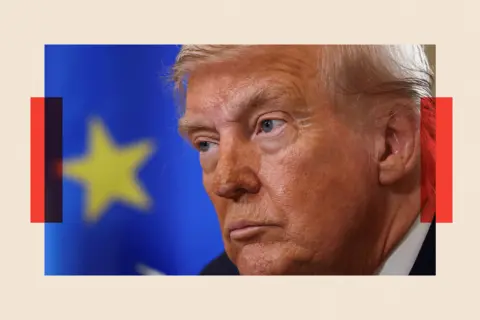 REUTERS/Evelyn Hockstein
REUTERS/Evelyn HocksteinForecasts are always uncertain, of course, but this represents a very real political threat for a president who promised to lower consumer prices, not take actions that would raise them.
Trump and other White House officials have floated the idea of providing rebate checks to lower-income Americans – the kinds of blue-collar voters who have fuelled the president’s political success – that would offset some of the pocketbook pain.
Such an effort could be unwieldy, and it would require congressional approval.
It’s also a tacit acknowledgment that simply boasting of new federal revenue to offset current spending and tax cuts, and holding out the prospect of future domestic job and wealth creation is politically perilous for a Republican party that will have to face voters in next year’s midterm state and congressional midterm elections.
The deals yet to be hammered out
Complicating all this is the fact that there are many places where a deal is yet to be hammered out – most notably Canada and Taiwan.
The US administration has yet to pronounce its decisions for the pharmaceuticals and steel industry. The colossal issue of China, subject to a different deadline, remains unresolved.
Trump agreed to a negotiating extension with Mexico, another major US trading partner, on Thursday morning.
Many of the deals that have been struck have been verbal, as yet unsigned. Moreover it is uncertain if and how the strings attached to Trump’s agreements – more money to be spent purchasing American energy or invested in America – will actually be delivered on.
In some cases, foreign leaders have denied the existence of provisions touted by the president.
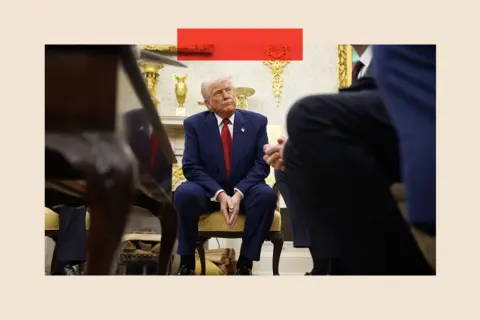 YURI GRIPAS/POOL/EPA-EFE/REX/Shutterstock
YURI GRIPAS/POOL/EPA-EFE/REX/ShutterstockWhen it comes to assessing tariff agreements between the White House and various countries, says Mr May, the “devil is in the detail” – and the details are light.
It’s clear, however, that the world has shifted back from the brink of a ruinous trade war. Now, as nations grapple with a new set of trade barriers, Trump aims to call the shots.
But history tells us that his overarching aim – to return production and jobs to America – may meet with very limited success. And America’s long-time trading partners, like Canada and the EU, could start looking to form economic and political connections that bypass what they no longer view as a reliable economic ally.
Trump may be benefitting from the leverage afforded by America’s unique position at the centre of a global trading order that it spent more than half a century establishing. If the current tariffs trigger a foundational realignment, however, the results may not ultimately break in favour of the US.
Those questions will be answered over years, not weeks or months. In the meantime, Trump’s own voters may still have to pick up the tab – through higher prices, less choice and slower growth.
Additional reporting: Michael Race. Top image credit: Getty Images
BBC InDepth is the home on the website and app for the best analysis, with fresh perspectives that challenge assumptions and deep reporting on the biggest issues of the day. And we showcase thought-provoking content from across BBC Sounds and iPlayer too. You can send us your feedback on the InDepth section by clicking on the button below.
Business
Samsung Electronics to utilize AI in 90% of business by 2030 – 조선일보
Business
Reshuffle of junior ministers raises fears over future of Labour’s workers’ rights bill | Labour
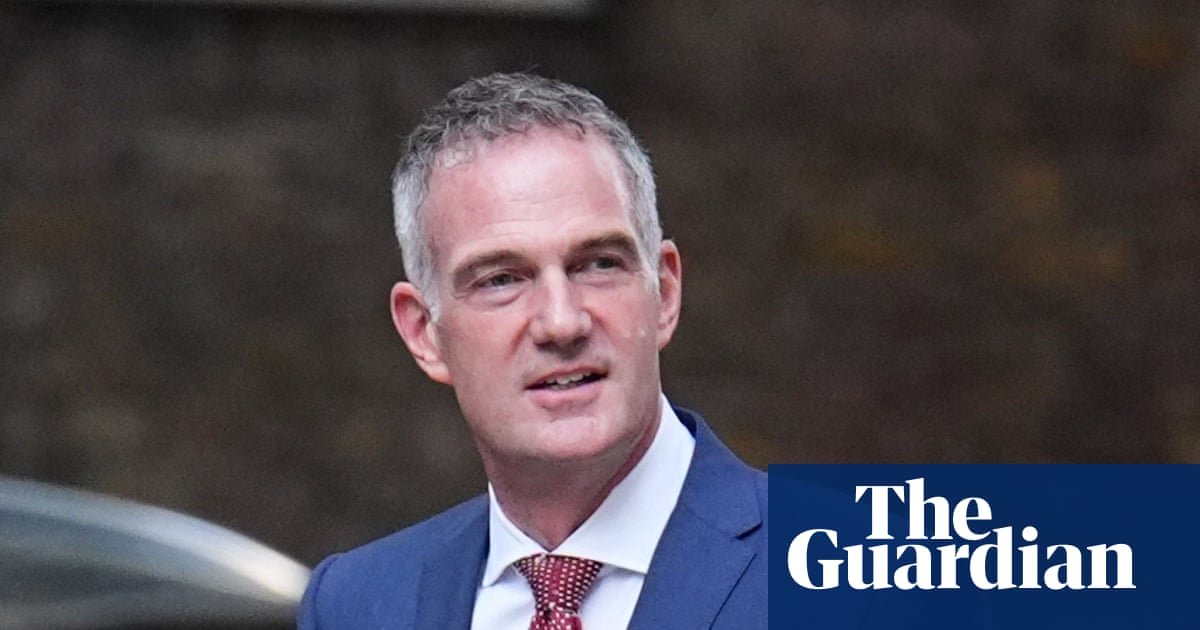
Keir Starmer has sought to tighten his grip on his government with a wave of junior ministerial changes that has sidelined allies of the unions, raising questions over the future of Labour’s workers’ rights package.
The reshuffle has been used by Downing Street to signal a tougher stance on immigration in an apparent bid to take on Reform UK, with Shabana Mahmood – a self-described social conservative rising star – now in charge of the Home Office, supported by Sarah Jones who returns to her former policing brief.
Justin Madders, the employment rights minister, was one of the first on the junior benches to be sacked on Saturday. Despite being seen as one of the architects of Labour’s “new deal for working people”, Madders’ departure was not formally announced in No 10’s list of appointments. Instead, he revealed the news himself.
“It has been a real privilege to serve as minister for employment rights and begin delivering on our plan to make work pay,” he said on X. “Sadly it is now time to pass the baton on – I wish my successor well & will do what I can to help them make sure the ERB is implemented as intended.”
Madders’ removal, along with Rayner’s forced departure from her two government positions and post as Labour’s deputy leader, removes the key figures who helped design Labour’s employment rights bill – a policy unions praised as the government’s most ambitious commitment to workers’ rights in decades.
Starmer will also not attend this year’s TUC conference, a decision that has intensified concerns and rumours among unions and some inside Labour that the government is distancing itself. Rayner was the cabinet minister closest to the unions, and Madders had been given the job of turning the new deal into legislation.
Peter Kyle, a close ally of Starmer, was promoted to lead the business department on Friday, meaning he will oversee the employment rights brief.
Allies of Rayner who remain in government believe a fight is looming over workers’ rights. With Rayner and Madders gone, they believe Kyle has the ability to water down the bill – a package they feel many from the centre of the party were never comfortable with. The issue is likely to become factional, given polls show stronger employment protections remain popular with voters flirting with Reform UK.
The package had promised sweeping reforms including day one rights for workers, a ban on zero-hours contracts and stronger protects against fire-and-rehire. A union chief told the Guardian: “Rayner was the closest minister to the unions and her team have played an important role in pushing key parts of the employment rights bill through government.
“The commitment to the bill is there from Keir so I’m less worried about that, but more worried about the broader sense of who actually understands the unions, and has the personal relationships.”
Ellie Reeves has been shifted from her role as party chair to solicitor general and will no longer attend cabinet. She has been replaced by Anna Turley. Georgia Gould, from Labour’s 2024 intake, has been promoted to education minister.
For Starmer, the cabinet reshuffle was about showing decisive leadership in the midst of a major crisis, to which as his chief secretary, Darren Jones, alluded. But this junior reshuffle for many shows a broader ideological return that sees the government more cemented under centrist control, and potential fights with the unions along the way.
after newsletter promotion
Meanwhile, the shake-up at the Home Office will be taken as a sign of strength by many within government. Mahmood, the new secretary of state, will lead a refreshed team that now includes Sarah Jones, a former shadow minister who has long wanted to return to the brief. Jones has been described by some as serious about public safety and police reform, and is well regarded in industry after her work on steel and the industrial strategy within the business department.
Dame Diana Johnson has been replaced by Jones and will now serve as a minister in the Department for Work and Pensions, while Dan Jarvis will remain a minister in the Home Office and has also been made a Cabinet Office minister.
Jason Stockwood, the former chair of Grimsby Town football club, will take a seat in the House of Lords to become investment minister as part of Starmer’s ministerial shake-up. He was Labour’s candidate for Greater Lincolnshire mayor but was beaten by Reform’s Andrea Jenkyns.
The local government minister Jim McMahon has been sacked and will return to the backbenches, along with Maria Eagle, the defence minister. Catherine McKinnell resigned as minister of state for school standards, which included overseeing Send reform. She said she declined the opportunity to stay in government.
Darren Jones dismissed the idea that Rayner’s departure could expose divisions within the Labour party, after Nigel Farage said “splits” will open.
“Nigel Farage is wrong there,” Jones told Sky News. “The Labour party is not going to split and there won’t be an early election.”
Business
Unite’s Sharon Graham: ‘Labour has one year to get it right. Farage is on their tail’ | Trade unions
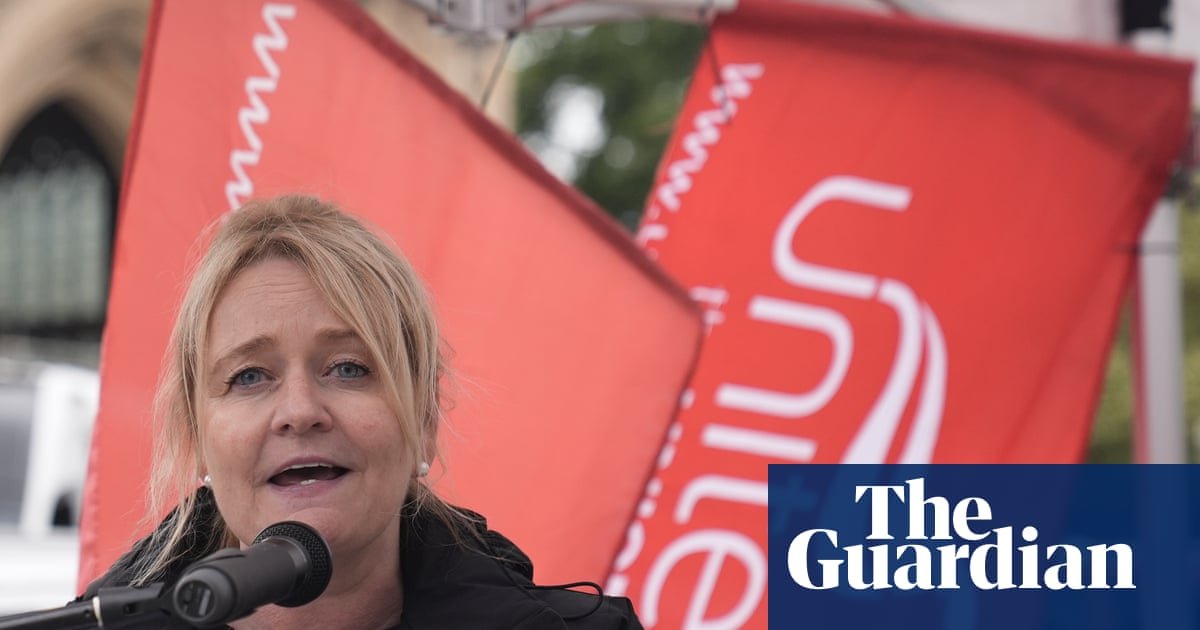
Labour’s most powerful union backer has warned that Keir Starmer is in danger of bolstering support for Nigel Farage, arguing that the government has failed to support oil and gas workers and watered down plans to boost employment rights.
Sharon Graham, the general secretary of Unite, said voters could be left feeling “duped” by Labour after the government scaled back planned changes to ban zero-hours contracts and exploitative “fire-and-rehire” practices.
As polls show Reform UK on course to become the largest party in the next parliament, the leader of the UK’s largest private sector union said Labour had not adopted its proposals to create new jobs for workers in fossil fuel industries.
Speaking to the Guardian before the start of the annual TUC conference on Sunday, Graham said Labour had a short time to turn things around or see support from union members leach away to other parties.
“They have one year to get this right because Nigel Farage is on their tail.
“And don’t get me wrong, Farage is not the answer, but he is a good communicator. And whether we like it or not, when he is talking about net zero, and about what’s happened to communities and workers, people are hearing what Labour used to say.”
She said that, with high inflation already taking a toll on household budgets, mooted tax rises in Rachel Reeves’s autumn budget would be the final straw for many Labour voters.
Graham said Labour needed to avoid taxing workers to fill the gap in the public finances and start drawing up plans for a wealth tax.
“If this keeps happening, the feeling that workers always pay, but they’re leaving the super-rich totally untouched – I think they won’t recover from it,” she said.
Echoing the Trades Union Congress general secretary Paul Nowak’s call for higher taxes on the richest households, she said: “[Labour] were very front foot forward with winter fuel. Now they should say absolutely [a wealth tax] is a good idea.”
Anger at Labour ministers from inside Unite’s ranks was high, she said, bringing the union close to cutting off party funds.
The fate of 30,000 workers in the oil and gas industry features on Graham’s list of priorities after a year spent trying to convince the energy secretary, Ed Miliband, that he should put more effort bringing green jobs to the UK.
He said: “Green jobs are not delivery workers on an electric scooter. I am talking about people in the oil and gas industry making the switch to green energy jobs.”
She said Unite had put forward proposals for investments in making sustainable aviation fuels and wind turbines to Miliband that had gained little traction.
There would be an almost unanimous vote to block further donations to Labour if a vote on the union’s political levy were held today, she said.
Earlier this year, its members overwhelmingly voted to suspend Angela Rayner’s membership over the former deputy prime minister’s “support for pay cuts” to striking Birmingham bin collectors.
after newsletter promotion
The strike could continue for another six months after bin workers voted this week for pay cuts of up to £8,000 to be reinstated.
When it suspended her membership, Unite said Rayner had backed special commissioners appointed by her department against Birmingham city council’s management, who were prepared to end the dispute.
Graham said anger boiled over when the government amended the employment rights bill (ERB) to allow councils to fire and rehire workers.
Under the amendments, councils will gain the ability to sack and rehire workers on worse pay and conditions if they are in financial distress – an opt-out already secured by private sector organisations.
The ERB is expected to be agreed by MPs later this year and take effect from next spring, with elements such as the implementation of day-one rights to sick pay and unfair dismissal protections delayed until 2026.
Extra powers for unions to recruit new members and gain collective bargaining rights will be on the statute books from April 2026, allowing access for those at companies that have locked out unions for decades, including Amazon.
Employers organisations are upset by clauses in the legislation that reduce the thresholds for unions to gain recognition agreements.
Graham said Labour had watered down previous “no ifs, no buts” commitments and allowed employers to ultimately refuse access, forcing unions to embark on lengthy appeals.
“Most blue-chip companies allow access to trade unions and negotiate with them. It is the hostile employers that don’t. And if you look at the collective bargaining pieces in the ERB there isn’t much to grab hold of,” she said.
-

 Business1 week ago
Business1 week agoThe Guardian view on Trump and the Fed: independence is no substitute for accountability | Editorial
-
Tools & Platforms4 weeks ago
Building Trust in Military AI Starts with Opening the Black Box – War on the Rocks
-

 Ethics & Policy1 month ago
Ethics & Policy1 month agoSDAIA Supports Saudi Arabia’s Leadership in Shaping Global AI Ethics, Policy, and Research – وكالة الأنباء السعودية
-

 Events & Conferences4 months ago
Events & Conferences4 months agoJourney to 1000 models: Scaling Instagram’s recommendation system
-

 Jobs & Careers2 months ago
Jobs & Careers2 months agoMumbai-based Perplexity Alternative Has 60k+ Users Without Funding
-

 Education2 months ago
Education2 months agoVEX Robotics launches AI-powered classroom robotics system
-

 Podcasts & Talks2 months ago
Podcasts & Talks2 months agoHappy 4th of July! 🎆 Made with Veo 3 in Gemini
-

 Funding & Business2 months ago
Funding & Business2 months agoKayak and Expedia race to build AI travel agents that turn social posts into itineraries
-

 Education2 months ago
Education2 months agoMacron says UK and France have duty to tackle illegal migration ‘with humanity, solidarity and firmness’ – UK politics live | Politics
-

 Podcasts & Talks2 months ago
Podcasts & Talks2 months agoOpenAI 🤝 @teamganassi



